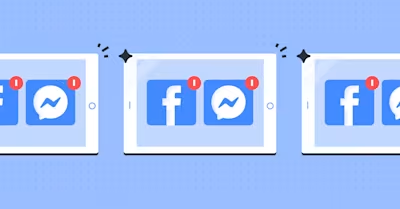
Free notifications with high deliverability rates and high engagement are always great news for businesses. If you are still using SMS to send notifications to customers, this blog is for you. Here, you’ll learn what Facebook Messenger push notifications are and the benefits of using Facebook push notifications for customer communication. We’ll also show you how you can use respond.io to send Facebook Messenger notifications.
Facebook Messenger Push Notifications: An Introduction
Let’s start from the beginning. What are push notifications, and why do many businesses worldwide choose Facebook Messenger for push notifications?
What are Push Notifications on Facebook?
Push notifications are messages sent by companies that open as a pop-up on the home screen or the top section of customers’ phones. Because of that, push notifications have higher visibility than other message types and are harder to ignore.
Companies use push notifications to deliver short messages to customers and notify them about something important or urgent. Here are some ways companies use push notifications:
Remind customers of an event they have registered for
Provide them with shipping information after their purchase
Update them on the status of their account
Notify them of limited-time deals
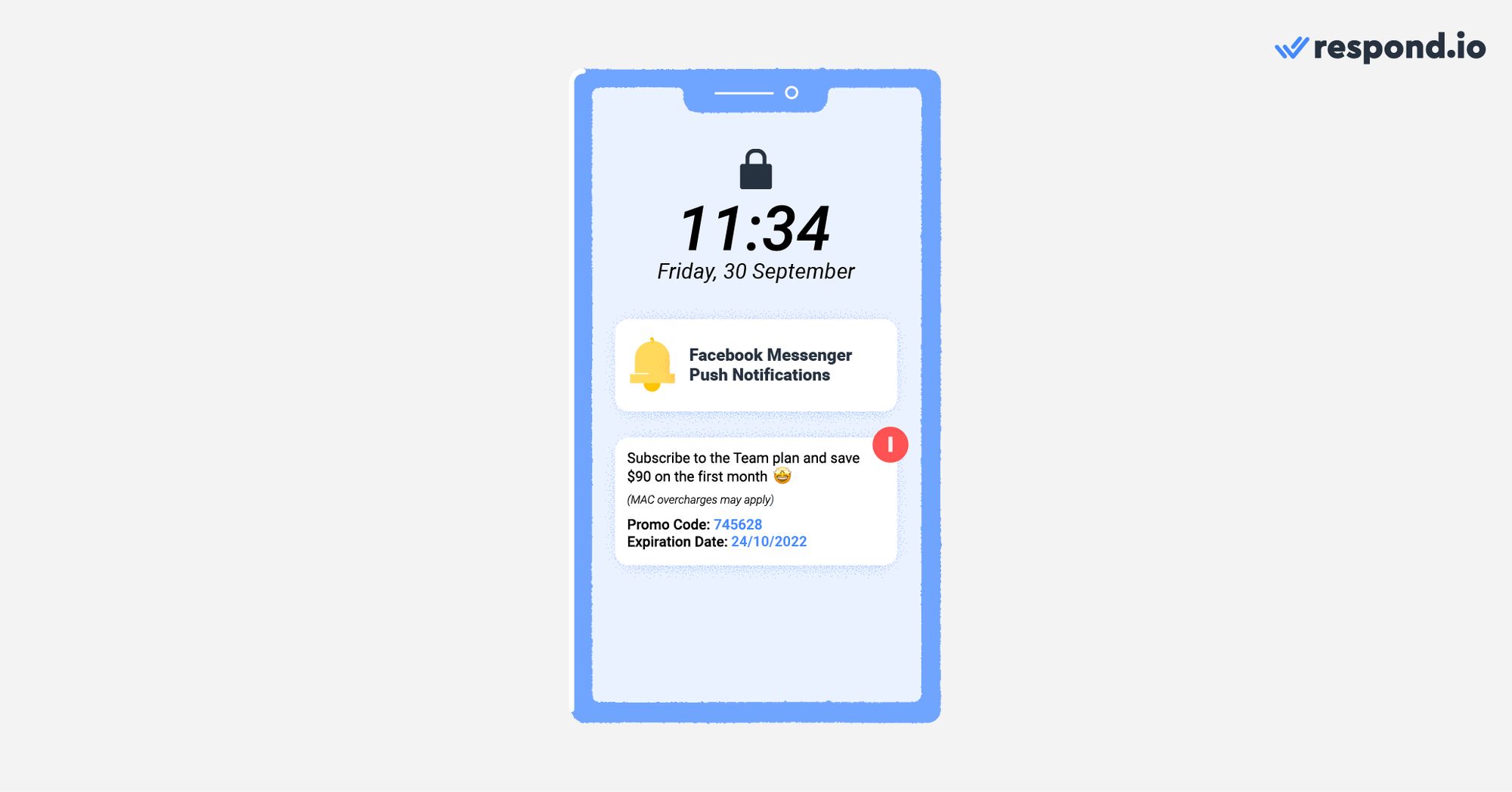
Traditionally, businesses have been relying on SMS services to send notifications. But in the last decade, companies are increasingly switching over to instant messaging channels.
For example, Facebook Messenger is a popular messaging channel choice due to its worldwide success as a communication app. If your customers are Facebook Messenger users, you should consider using Facebook Messenger to send them push notifications.
Facebook Messenger Push Notifications vs SMS
Next, we’ll compare SMS and Facebook Messenger in the context of push notifications to determine which one is the best fit for companies like yours.
SMS Notifications for Business Messaging
SMS messaging can be quite expensive, with prices varying for the different types of numbers and SMS providers. Short code numbers are popular because of their high deliverability rate, but businesses must pay set up and lease fees on top of message fees.
SMS messaging is also limiting, as it doesn’t support files or media. While emojis are supported, they aren’t SMS-native and need to be decoded. Thus, using a single emoji can reduce the character limit of a standard SMS from 160 to 70.
People should be able to opt out of your notifications easily. Otherwise, they might block your number. Unfortunately, customers must send an SMS to stop receiving messages from the business in question, with costs involved.
In addition, SMS notifications are subject to carrier filtering. Because of that, some may not arrive at their destination. Let’s see how Facebook Messenger notifications fare against SMS messaging.
Facebook Messenger Push Notifications for Business Messaging
For a start, Facebook Messenger messaging is free. This is great news for businesses that need to send plenty of push notifications.
Facebook Messenger messages support files, media and emojis, which make push notifications more engaging. And engaged customers are more likely to take action after reading a notification.
SMS | Facebook Messenger Push | |
|---|---|---|
Price | Variable | Free |
Supports Multimedia | No | Yes |
Opt-out Method | Send an SMS to the business | Request directly in the 1:1 chat |
Deliverability Rates | Low to High | High |
Opting out of Facebook Messenger notifications is as easy as sending a 1:1 message on Facebook Messenger indicating that you don’t want to receive notifications any more. Unlike SMS, this is cost-free.
Lastly, Facebook Messenger push notifications have very high deliverability rates as these don’t undergo a filtering process like SMS.
Next, we’ll run you through the most important points to consider about using Facebook push notifications.
Turn customer conversations into business growth with respond.io. ✨
Manage calls, chats and emails in one place!
What You Need to Know Before Using Facebook Messenger Push Notifications
When it comes to Facebook Messenger messaging inboxes, these are the two main options: You can either use the Meta Business Suite or connect your Facebook Page to a messaging inbox.
The Meta Business Suite includes some messaging and organizational tools suitable for some small and medium small businesses, such as basic automation, labels and filters. However, it lacks broadcast functionality for Facebook Messenger and it’s not omnichannel, but multichannel.
If you are looking for advanced messaging and organizational tools to send Facebook Messenger push notifications at scale, connect your Facebook Page to an omnichannel messaging inbox like respond.io.

To prevent spam, Meta has implemented some messaging rules for businesses using the Facebook Messenger API.
The first rule is you can’t import Contacts. Instead, they must send you the first message before you can message them back. Luckily, Meta offers different ways for customers to start conversations with businesses.
The second rule is, businesses have a 24-hour messaging window for conversations initiated by customers. Within that window, businesses are allowed to send messages without restrictions.
If you want to send Facebook push notifications outside the messaging window, you can do it with Facebook Message Tags. Just keep in mind that Message Tags may not be used for promotional content.
Now that you are familiar with the basics of Facebook Messenger, you are ready for the next step. Here‘s how to send Facebook Messenger push notifications using respond.io as a messaging inbox.
How to Send Facebook Messenger Notifications with Respond.io
Your company’s teams don’t have the same objectives when it comes to customer communication, and that reflects in their messaging practices. Facebook push notifications from a support agent are not the same as the ones sent by a marketer.
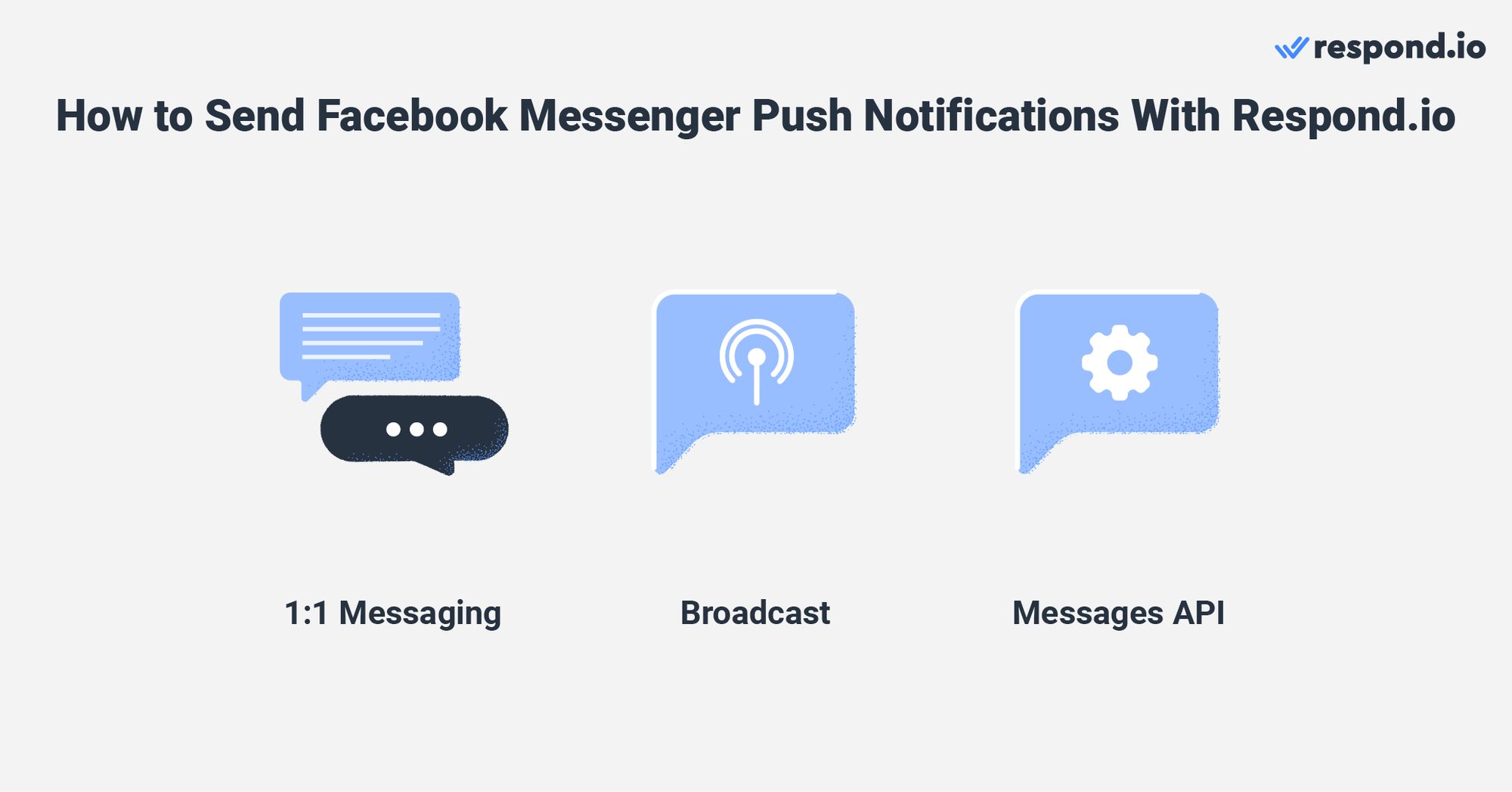
In this section, we’ll show you three push notification strategies for support, sales, marketing and transactional messages.
Facebook Messenger Notifications with Respond.io: 1:1 Messaging
Support and sales agents tend to send 1:1 push notifications to a single customer rather than blasting messages to an audience.
From the respond.io Messages Module, agents can manually type and send Facebook Messenger push notifications or trigger them at the click of a button. With respond.io, it’s possible to send text, images, audio and files in these notifications.
Support agents will generally use the Post-Purchase Update and Account Update Message Tags to keep customers informed outside the messaging window.
On the other hand, sales agents can use the Confirmed Event Update Message Tag to send a booking confirmation or remind customers of a payment update, for instance.

But there’s more. Meta is testing a Human Agent Tag to extend the messaging window from 24 hours to seven days. This feature is still in beta, and only available to some platforms like respond.io.
This messaging window extension is especially useful for support and sales, as their communication with customers tends to be more conversational. The Human Agent Tag gives them enough time to attend to potential customer inquiries in response to Facebook Messenger push notifications.
Facebook Messenger Notifications with Respond.io: Broadcast
Marketing teams usually broadcast push notifications to large audiences for promotional purposes. There are two ways to do it with Facebook Messenger.
First, you can broadcast Facebook Messenger push notifications. Note that you’ll have to abide by Meta's rules and use Message Tags only for their intended use cases, so shape your push notifications content carefully. Otherwise, you might face a broadcast ban.

Facebook Messenger broadcasts can be easily scheduled from respond.io’s Broadcast Module. For more details, check out our Facebook Messenger broadcast guide.
Sponsored Messages are Meta’s solution for businesses who want to broadcast push notifications with promotional intent. Unfortunately, these are not free. As a free alternative, you can consider Telegram broadcast.
Facebook Messenger notifications can also be automatically sent via API without involving customer-facing teams. Keep reading to know more.
Facebook Messenger Notifications with Respond.io: Messages API
Transactional notifications are automated messages that serve a necessary purpose in the customer journey. They are automatically triggered in response to specific customer actions and often include sensitive information.
For example, customers may receive transactional notifications when making an online payment, or after applying for a new password on a website.
Respond.io’s Messages API is the most reliable way to send transactional push notifications containing text, attachments and text with quick replies. Since it’s an API, it has no interface and has to be connected to a business software.
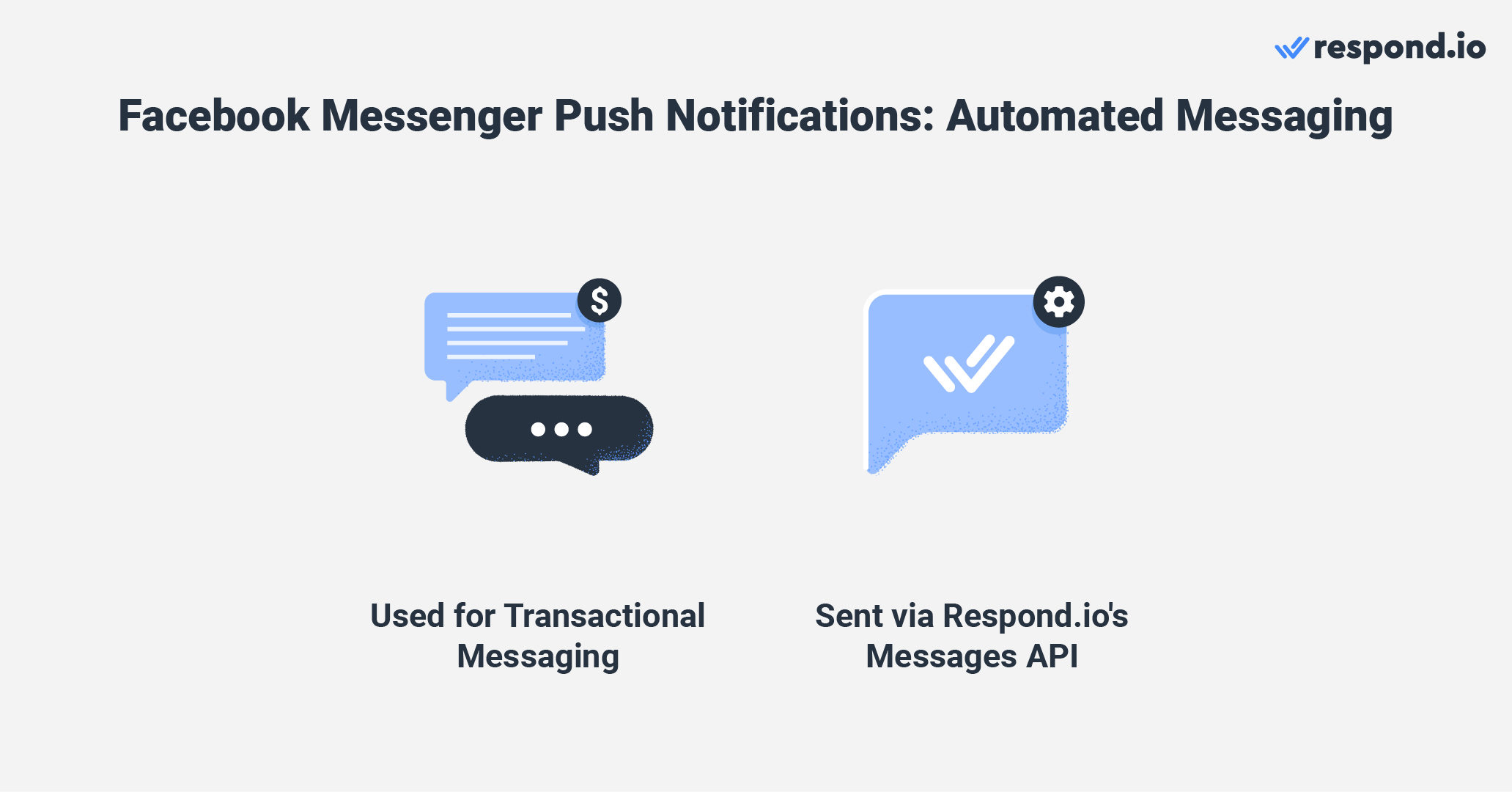
This is how Messages API works:
A customer triggers an event in your business software.
The business software generates a Facebook Messenger notification in response.
The Facebook Messenger notification is passed on to Messages API and subsequently respond.io.
The customer receives a Facebook Messenger push notification.
Broadcast, 1:1 messaging and Messages API should cover most of your push notifications needs. However, we’d like to show you an additional way to send automated push notifications to customers who interact with your Facebook page.
How to Send Facebook Push Notifications to Facebook Page Visitors with Respond.io
Facebook Private Replies is a Facebook feature designed to send private automated push notifications to users who comment on your Facebook Page posts. It’s a practical tool that can help you convert page visitors into respond.io Contacts.
A Facebook Private Reply can be a generic reply for all your Facebook Page posts or a specific reply for each of your posts. To use this feature, you’ll need to connect Facebook Messenger to respond.io.
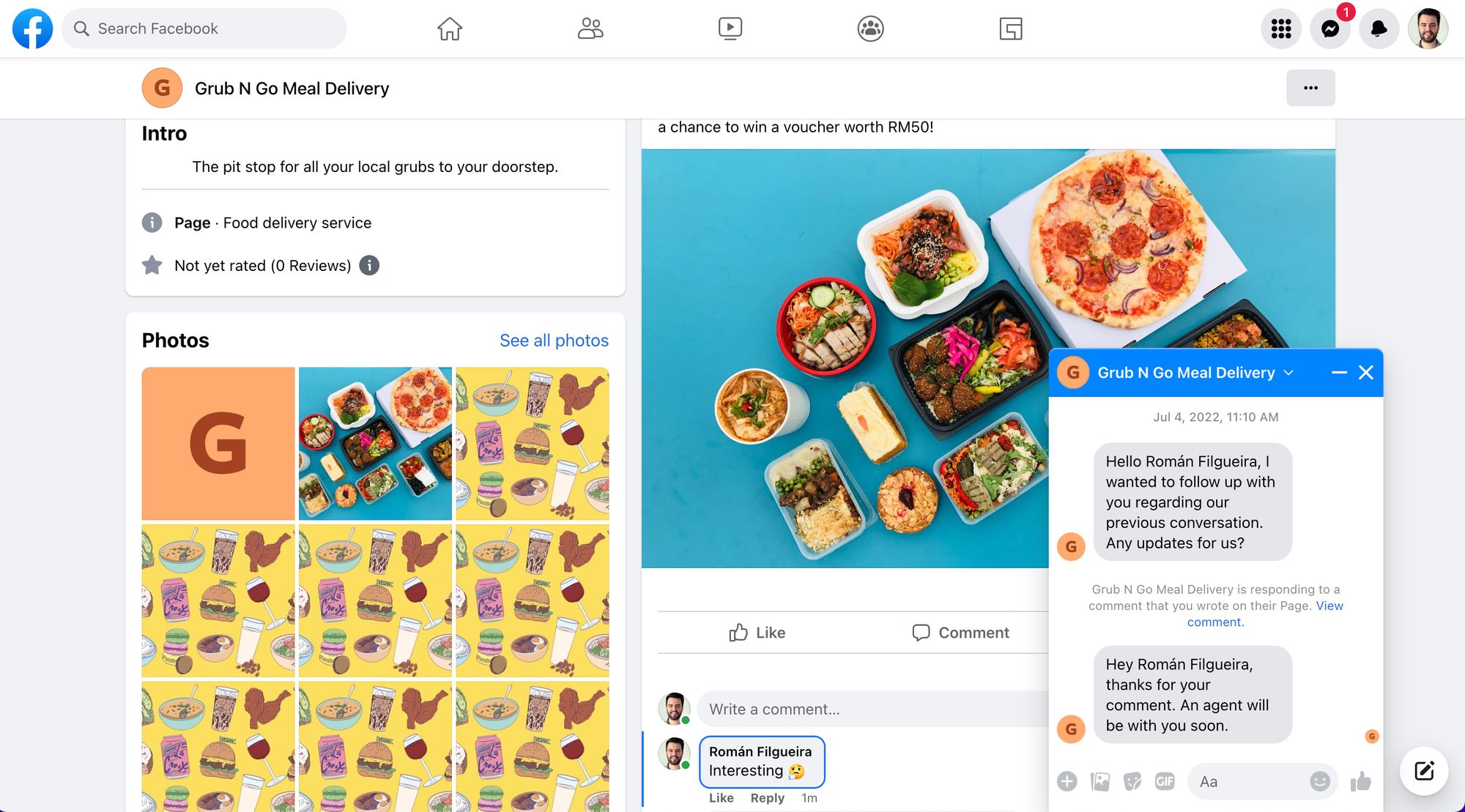
Sales teams may use this feature to collect leads. As for support teams, it’s a practical way to systematically take discussions with customers out of the public eye. In short, this is how Facebook Private Replies work:
A page visitor leaves a comment on your post
A Facebook Messenger push notification is triggered and is sent to the visitor’s phone
The page visitor replies to the notification, becoming a respond.io Contact
Remember that respond.io Contacts are people who have interacted with the messaging channels connected to the platform. Therefore, Page visitors will only become Contacts if they reply to the push notification.
As shown, using respond.io for Facebook Messenger push notifications opens up a whole world of possibilities. Let’s see some extra features that make respond.io a great choice for Facebook Messenger push notifications.
Facebook Messenger Notifications with Respond.io: Quick Wins
Respond.io is not only useful for Facebook Messenger push notifications — it’s a platform designed for the entire customer lifecycle. It contains everything medium and large businesses need to market, sell and support across multiple channels.
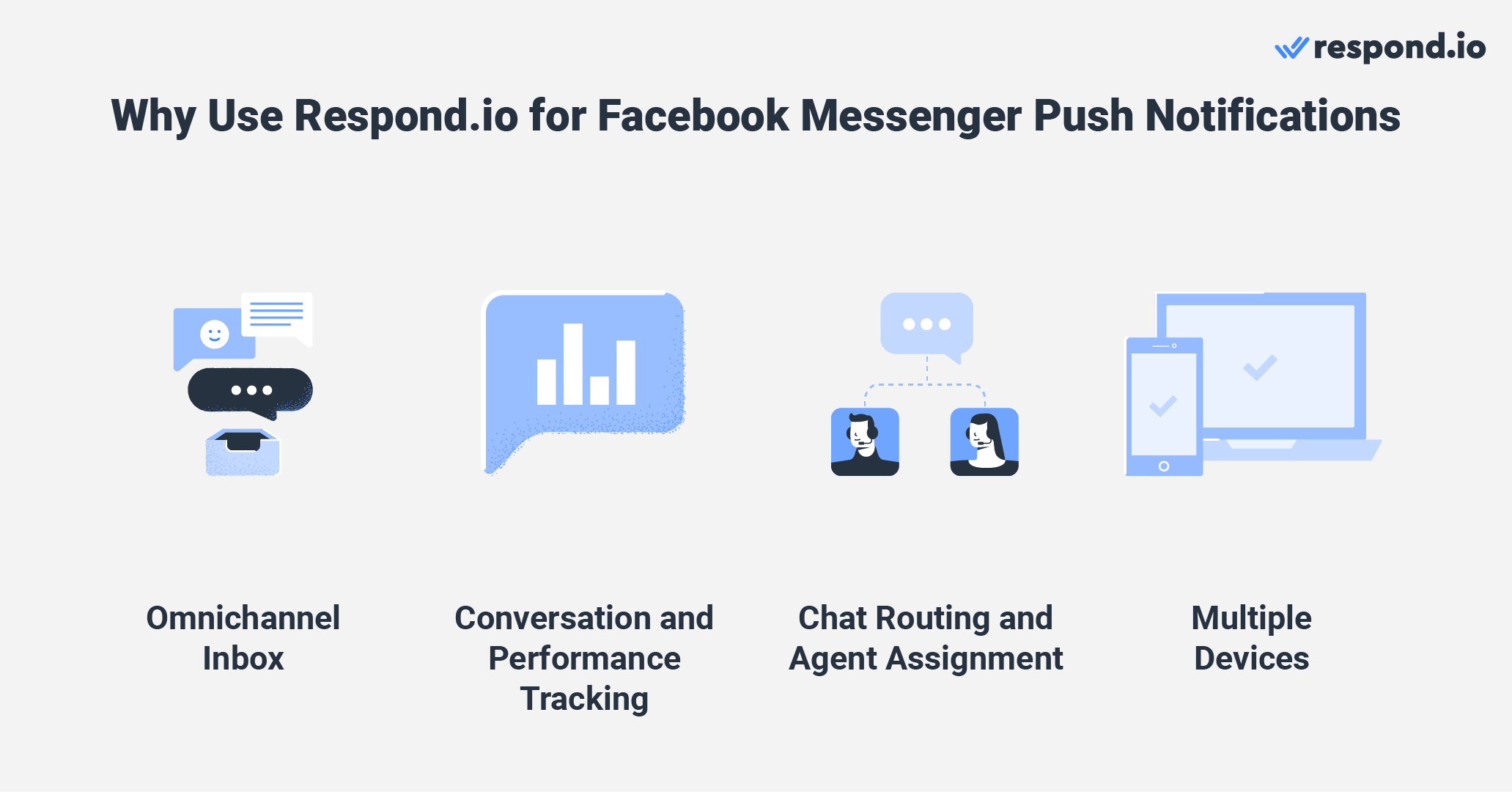
In the final section, we’ll briefly introduce you to four quick wins that businesses experience when using respond.io as a messaging inbox for Facebook Messenger push notifications.
Unify All Your Channels in an Omnichannel Inbox
Meta Business Suite users can only send push notifications via Facebook Messenger. But it’s likely that your customers use other messaging apps to communicate with you.
For that reason, you’ll need an omnichannel inbox that works with other popular messaging channels such as Instagram DM, WhatsApp or LINE, as well as your custom channels.
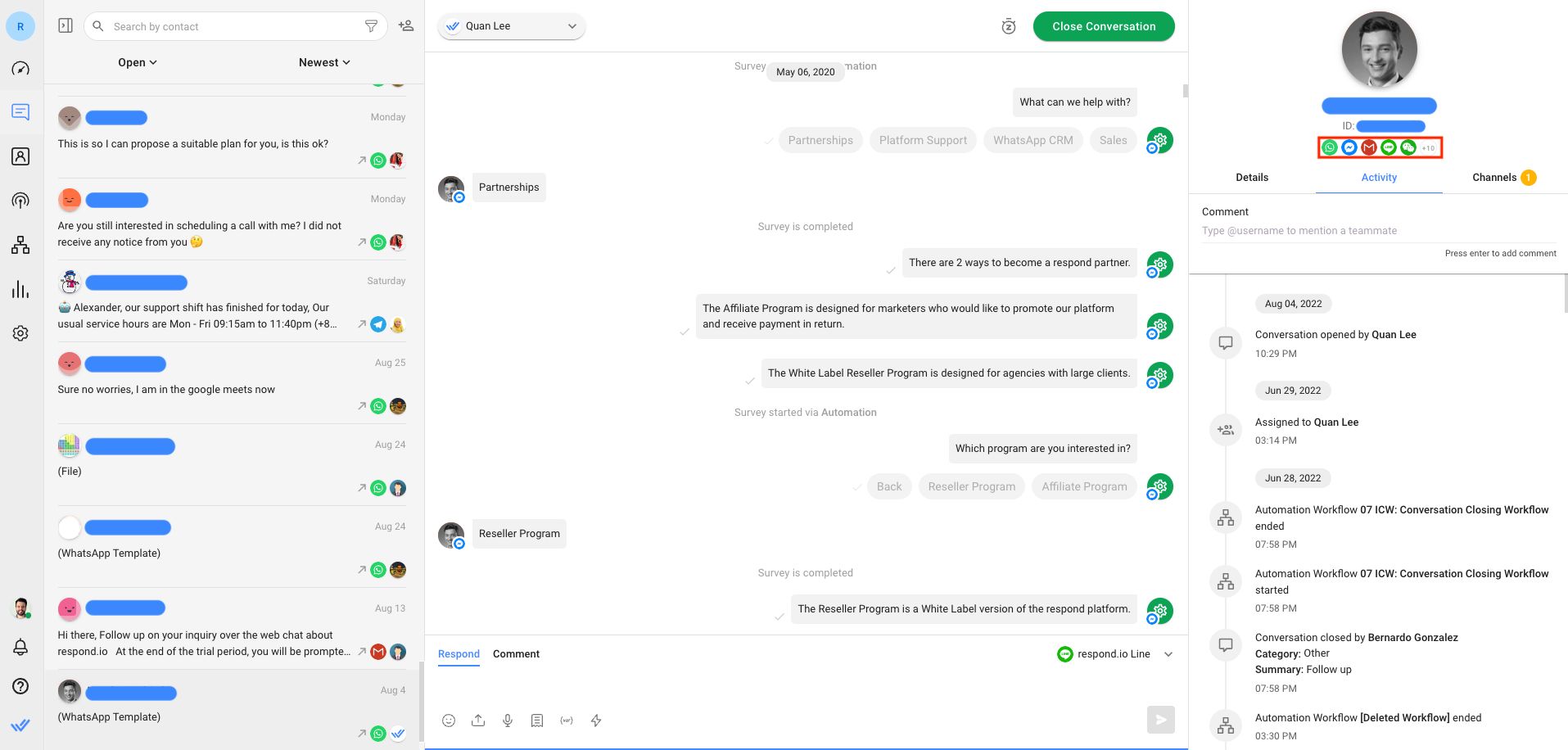
Respond.io lets you unify all your channels in a single inbox, simplifying communication with your customers and preventing scattered conversations across different channels.
Execute Your Ideal Chat Routing and Agent Assignment Strategies
Push notifications sent by customer-facing teams often get responses and the interaction between agents and customers tends to be more conversational. With respond.io’s Workflows, you can automate how these responses are handled.
This tool helps provide quick and efficient assistance while reducing agent load. Start by creating your ideal chat routing strategy in the Workflow builder. You could route conversations by team function, Contact language or shifts, to name some examples.
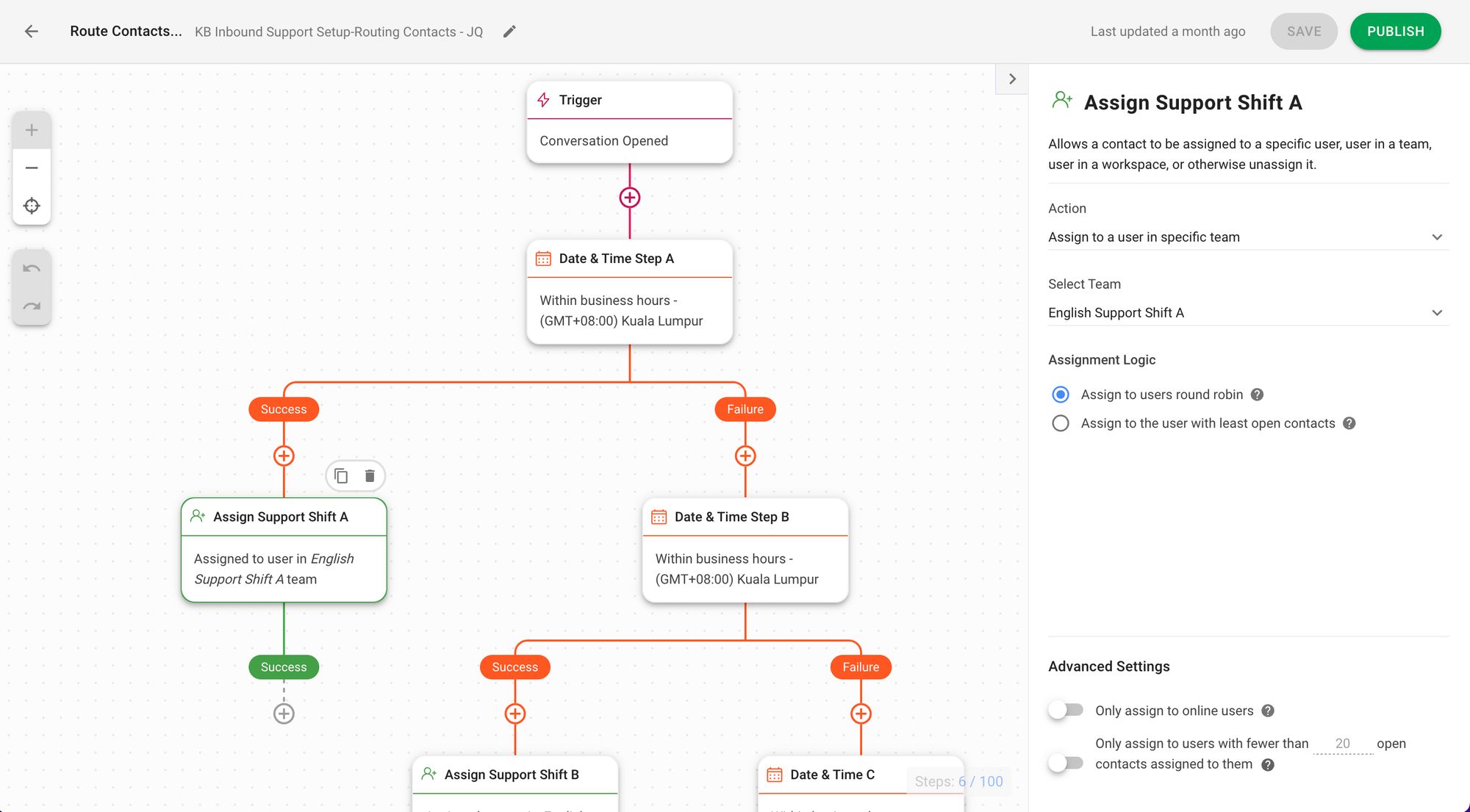
Then, use your preferred auto-assignment strategy to deliver the conversation to the right agent in the team.
Track Conversations and Agent Performance with Advanced Tools
Respond.io has the tools required to supervise push notifications sent by agents, and how responses are handled. In the Messages Module, managers have a general view of each Contact.
Use the Messaging Console to get a detailed overview of every interaction, and the Contact Activity tab for a summary of the conversation events in chronological order. For a granular view of an individual agent or team performance, use the Reports Module.
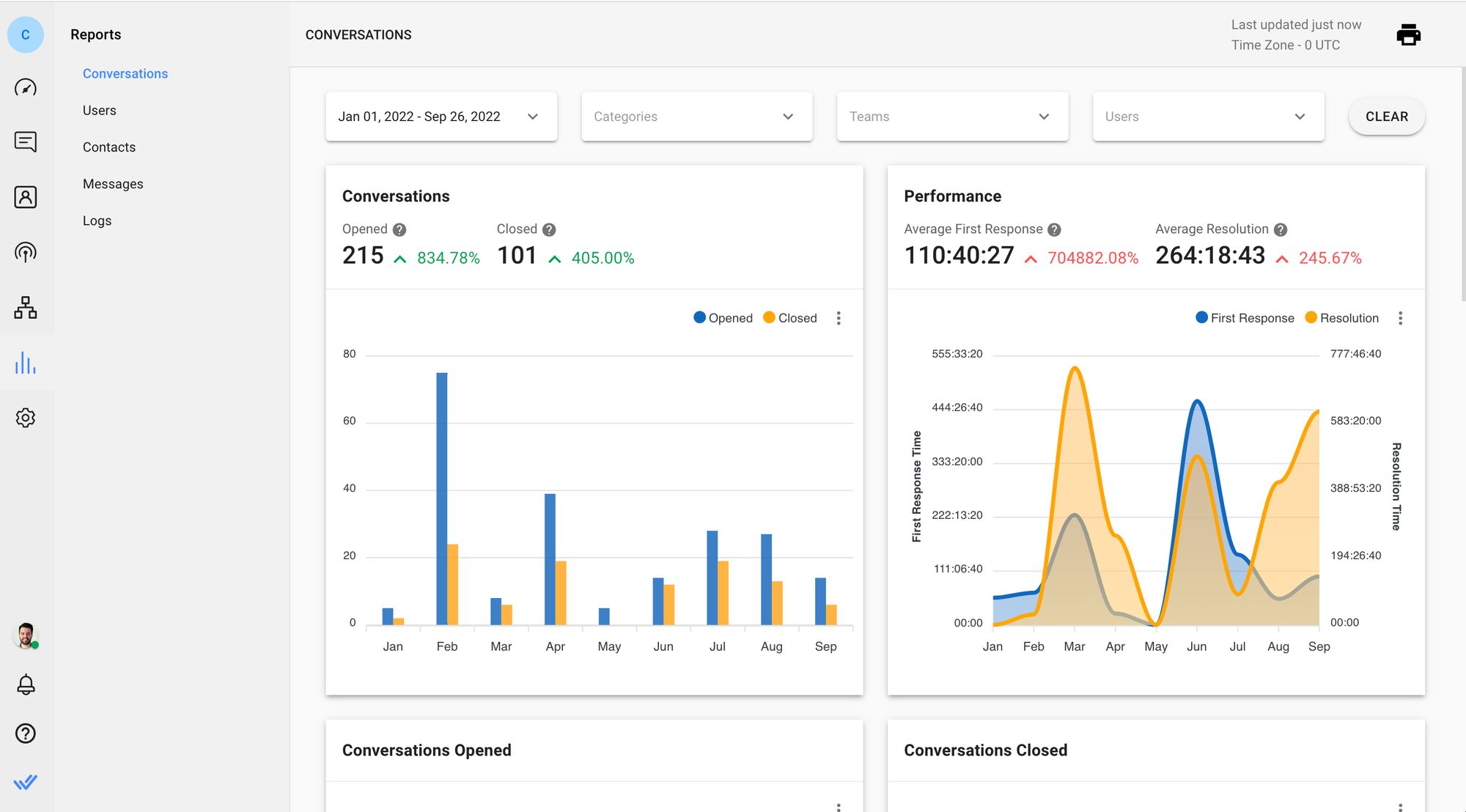
You can use filters (date, categories, teams and users) to sift through data to find new insights and areas of improvement. Here you can find out who is leaving push notification responses on hold for too long, or who has too few conversations assigned.
Notify Customers on the Go with the Respond.io Mobile App
Imagine the following scenario: One of your VIP clients needs assistance, but the account manager is not at his desk. You don’t want to cause a bad impression by delaying a push notification until the manager returns.

Because problems may appear when you least expect them, make sure you choose a cross-device messaging inbox.
Respond.io is available on multiple devices, allowing agents to send Facebook Messenger push notifications from their desktop as well as their cellphones. Download the respond.io app from Google Play Store for Android and Apple App Store for iOS.
Do you want to send Facebook Messenger push notifications with the leading customer messaging platform? Sign up for a respond.io account here.
Turn customer conversations into business growth with respond.io. ✨
Manage calls, chats and emails in one place!
Further Reading
If you’ve found this article interesting, here are some additional readings for you:




























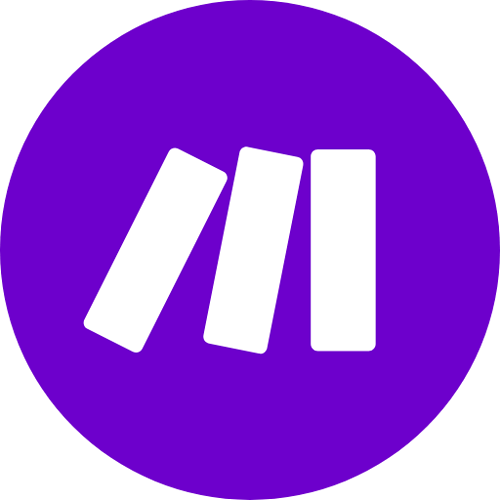









 Electronics
Electronics Fashion & Apparel
Fashion & Apparel Furniture
Furniture Jewelry and Watches
Jewelry and Watches
 Afterschool Activities
Afterschool Activities Sport & Fitness
Sport & Fitness
 Beauty Center
Beauty Center Dental Clinic
Dental Clinic Medical Clinic
Medical Clinic
 Home Cleaning & Maid Services
Home Cleaning & Maid Services Photography & Videography
Photography & Videography
 Car Dealership
Car Dealership
 Travel Agency & Tour Operator
Travel Agency & Tour Operator




